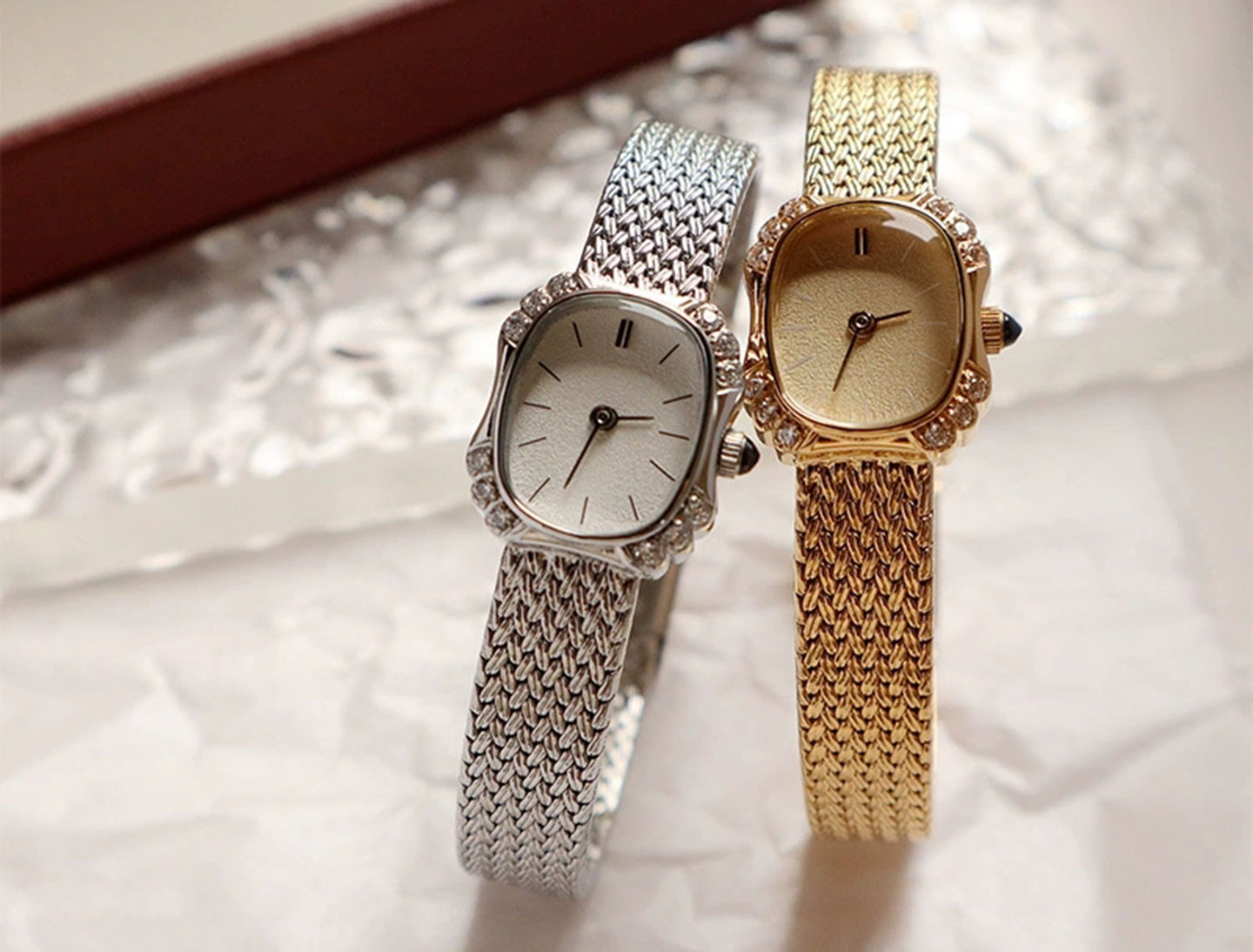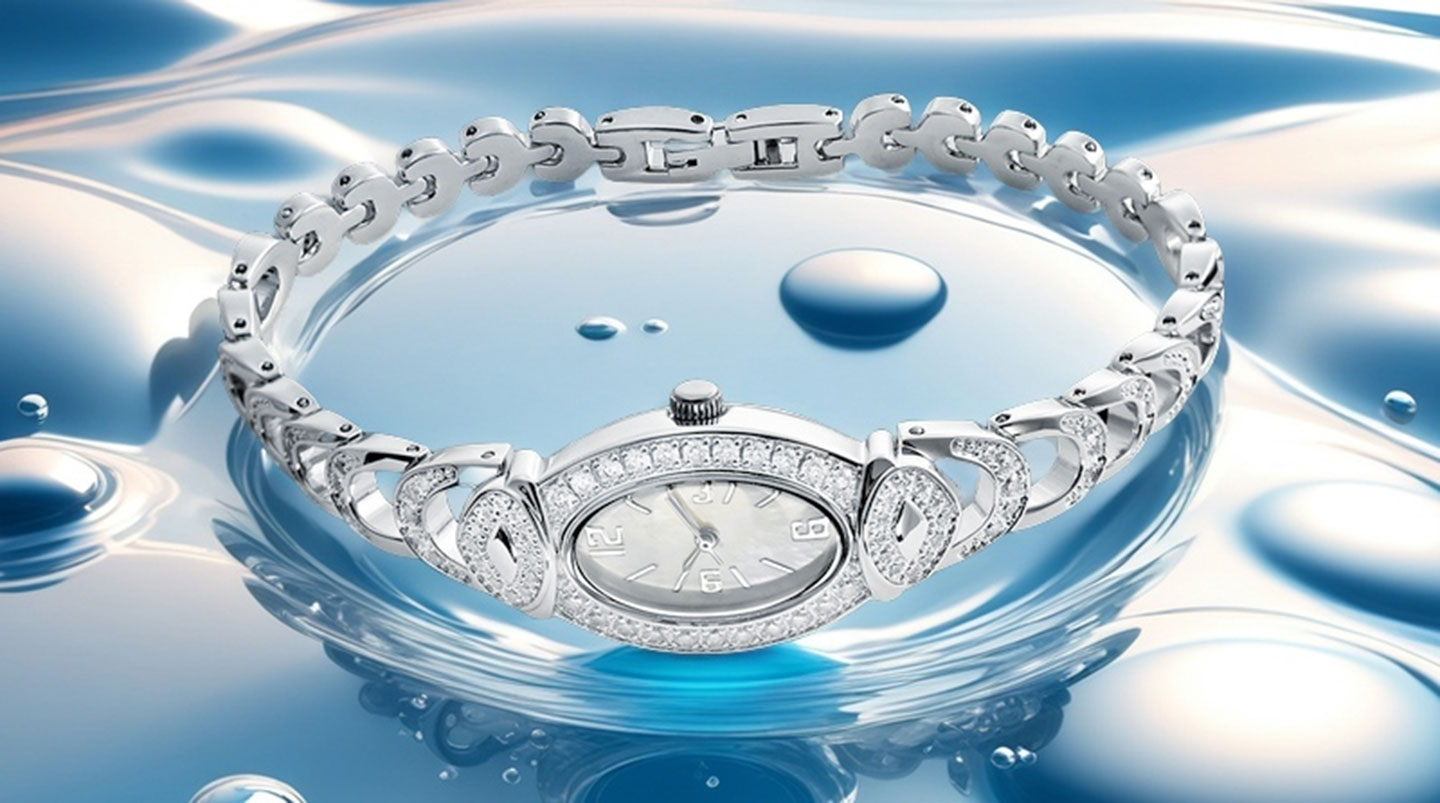1. Copper: A Balance of Cost-Effectiveness and Craft Compatibility
- Mechanical Properties Adapted to Movement Needs
Copper (especially brass and bronze) boasts excellent ductility, toughness, and anti-magnetism, with a lower cost than precious metals like gold or platinum. In internal watch components such as gears and plates, copper precisely transmits power, resists wear, and is easy to machine into complex shapes—making it a classic choice for movement structural parts.
Additionally, copper alloys (e.g., brass, blended with nickel or zinc) offer strong oxidation resistance, reducing internal movement failures caused by oxidation and ensuring stable timekeeping.
- Vintage and Artistic Appeal in External Decoration
Some jewelry watches use copper (particularly bronze) for cases or bezels. Over time, bronze develops a unique patina through oxidation, creating a vintage, aged effect. Paired with gemstone inlays (such as sapphires or enamel), this style exudes retro luxury, becoming a design highlight. This time-evolving texture appeals to consumers seeking personalization.

2. Silver: A Fusion of Precious Metal Attributes and Decorative Value
- Precious Metal Aesthetics Aligned with Jewelry Positioning
Silver, a traditional precious metal, features a bright, white luster and an inherent elegance that perfectly matches the "jewelry identity" of luxury watches. It can be polished to a mirror finish or carved with intricate patterns, serving as the base material for cases or bracelets. When inlaid with diamonds or gemstones, silver enhances overall luxury while remaining more accessible than gold, making jewelry watches appealing to a broader audience.
- High Craft Versatility for Gem Setting
Silver’s exceptional ductility allows for fine processing like forging, brushing, and engraving, enabling complex jewelry-grade techniques (e.g., openwork carving or enamel painting). Its moderate hardness also makes it ideal for securing gem settings, such as prongs or bezels, ensuring gems and the watch remain firmly integrated.
- Cultural and Symbolic Significance
In many cultures, silver symbolizes purity and nobility, aligning with the symbolism of jewelry. Premium jewelry watches often use pure silver or silver plating to emphasize their "collectible" value, catering to consumers’ appreciation for the cultural worth of precious metals.

3. Shared Advantage: Compatibility with Jewelry Elements
Both copper and silver can be electroplated (e.g., with rhodium or gold) to enhance surface texture or boost oxidation resistance, ensuring harmony with jewelry elements like diamonds, colored gemstones, or enamel. For example:
- Rhodium-plated copper substrates take on a silvery-white hue, mimicking platinum to complement the brilliance of diamonds;
- Silver surfaces can be adorned with colored enamel glazes, creating vibrant decorative effects that elevate the artistic value of jewelry watches.
Copper, with its superior mechanical properties and cost efficiency, is a practical choice for jewelry watch movements and vintage-style cases. Silver, meanwhile, with its precious metal status, craft versatility, and decorative appeal, aligns seamlessly with the luxury positioning of jewelry watches. Their balance of functionality and aesthetics solidifies their role in jewelry watches—meeting precision timekeeping needs while showcasing high-end design and cultural depth through integration with jewelry elements.
#jewelrywatch #jewellrywatch #womenwatch #ladieswatch #watchmanufacturer #oemwatch #customwatch

 Home
Home Gezfeel
Gezfeel Aug 14 2025
Aug 14 2025



 Address: Room 405, Building A, Qianhai Zhichuang Technology Industrial Park, No.60 Nanchang Road, Nanchang Community, Xixiang Street, Baoan District, Shenzhen, China
Address: Room 405, Building A, Qianhai Zhichuang Technology Industrial Park, No.60 Nanchang Road, Nanchang Community, Xixiang Street, Baoan District, Shenzhen, China

